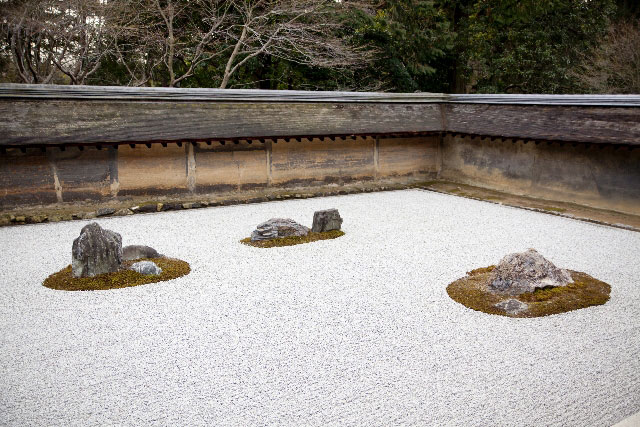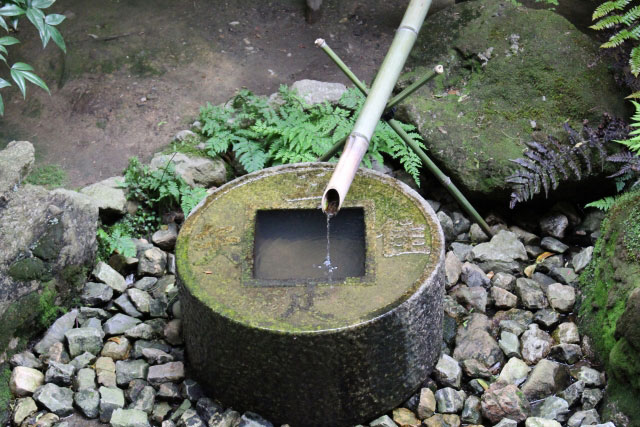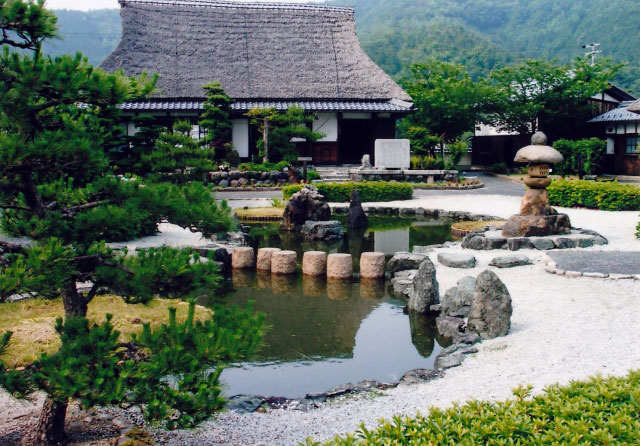Japanese gardens are some of the most beautiful and tranquil spaces in the world. Imparting a sense of unspoiled beauty, Japanese gardens are stylized, yet natural, representations of nature… idealized versions of landscapes that evoke serenity, meditation, harmony and grace.
From the smallest backyard to the largest park, Japanese garden traditions revolve around six aesthetic principles, including point of view (or perspective), miniaturization, concealment, ‘borrowed’ scenery, asymmetry and artistic form. The earliest documentation of these principles can be found in the Sakuteiki (or Notes on Gardening) written during the Heian period of Japan’s history, from approximately 794-1185 CE. According to these principles, the Japanese garden is a miniaturized and often, abstract, version of a larger natural landscape, where fine sand or gravel can represent water or large rocks represent islands. The designed landscape is meant to be viewed from a particular perspective, whether a seated position, such as in traditional meditation gardens, or from elevated platforms, such as in pleasure gardens. These perspectives inform the scale of the garden, along with the types of flora, fauna, water and rock elements used in it. In this landscape design tradition, plants, animals and hardscape are deliberately chosen to tell a subtle story, sometimes of mythological or religious beings, and sometimes of the passage of seasons in an area fondly remembered. To that end, Japanese gardens are not constrained to a grid of a symmetrical design axis, like the formal Western flower gardens at Versailles. Elements flow in natural patterns, often placed according to Buddhist geomancy principles.

Traditional Japanese gardens have survived the many periods of Japan’s history, beginning in the Heian and Muromachi periods, then experiencing a resurgence during the Edo and Meiji periods and again in current, modern times. Today, large-scale urban parks incorporate the main styles of Japanese gardens into their landscapes, including the tsukiyama, karesansui and chaniwa styles. The tsukiyama style focuses on showing nature in miniature, using small-scale trees, rocks, waterfalls, streams and ponds. The karesansui, or “dry”, style uses sand and gravel to represent flowing water, and is most often seen in zen or meditation gardens because of the simple elegance of the garden. Chaniwa-style gardens are adjacent to a teahouse, and are designed to be utterly natural and simple, while at the same time meant to prepare a guest for entering the teahouse for the chanoyu or tea ceremony. A garden path denoted by tobi-ishi, or stepping stones, guides guests to the teahouse, along with stone lanterns called ishidoro. Small round stone bundles bound with straw are placed along the paths so that guests will know where they are not to step. A tsukubai, or stone basin and ladle, are placed at the end of the garden path, and water from an elevated bamboo pipe, or kakei, is poured into it so that guests may wash their hands and mouths prior to entering the teahouse.

These three styles of traditional gardens are seen in spectacular public spaces, and one particular garden not to be missed is the Ryoan-ji Hojo Temple Garden in Kyoto.
Japanese gardens are now famously available to people all over the world, and even if you don’t live close to one, designing your own garden space, however large or small, can be a beautiful, artistic and fulfilling endeavor.

Leave a Reply